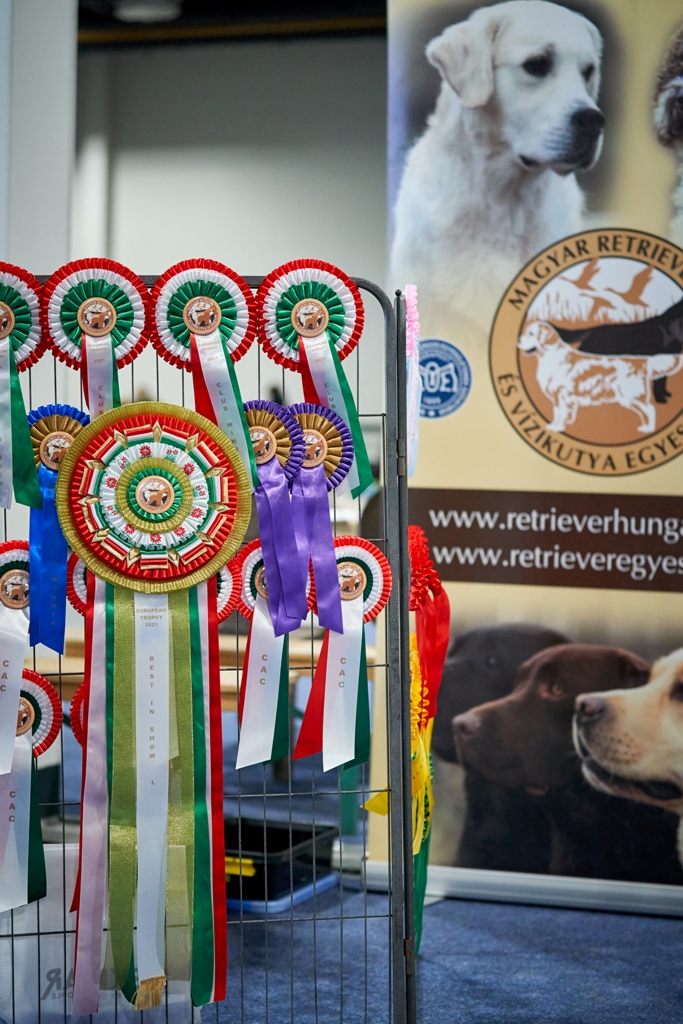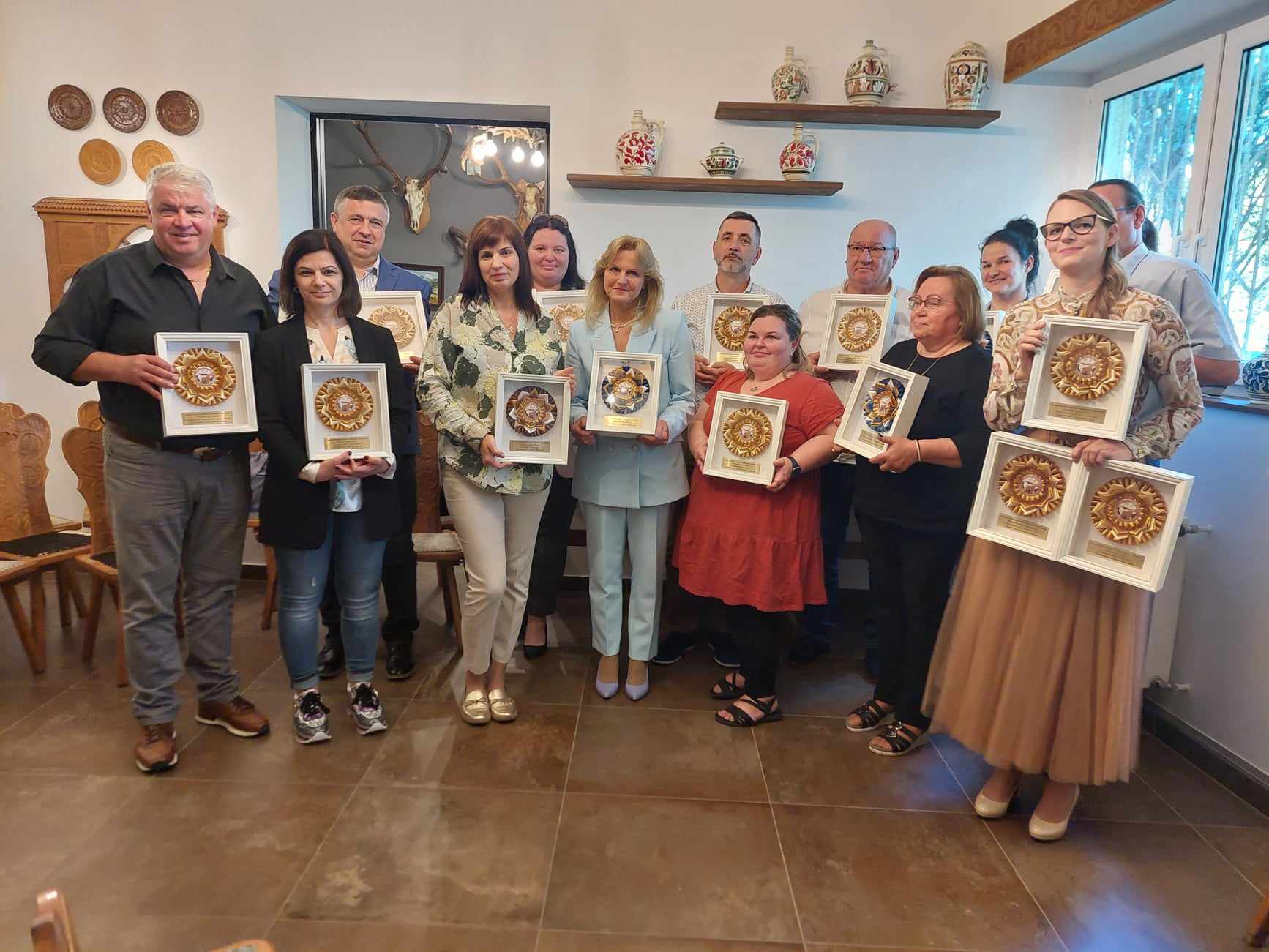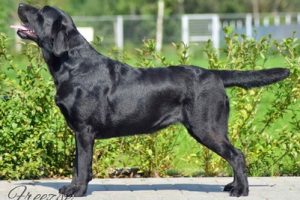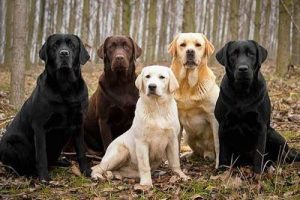BEHAVIOUR AND TEMPERAMENT:
Good-tempered, very agile. Excellent nose, soft mouth; keen lover of water. Adaptable, devoted companion. Intelligent, keen and biddable, with a strong will to please. Kindly nature, with no trace of aggression or undue shyness.
NECK:
Clean, strong, powerful, set into well placed shoulders.
BODY:
Topline: Level.
Loin: Wide, short-coupled and strong.
Chest: Of good width and depth, with well sprung barrel ribs – this effect not to be produced by carrying excessive weight.
GAIT / MOVEMENT:
Free, covering adequate ground; straight and true in front and rear.
COAT:
Hair: Distinctive feature, short, dense, without wave or feathering, giving fairly hard feel to the touch; weather-resistant undercoat.
Colour: Wholly black, yellow or liver/chocolate. Yellows range from light cream to red fox. Small white spot on chest permissible.
HEAD
CRANIAL REGION:
Skull: Broad. Clean-cut without fleshy cheeks.
Stop: Defined.
FACIAL REGION:
Nose: Wide, nostrils well developed.
Muzzle: Powerful, not snipy.
Jaws / Teeth: Jaws of medium length, jaws and teeth strong with a perfect, regular and complete scissor bite, i.e. upper teeth closely overlapping lower teeth and set square to the jaws.
Eyes: Medium size, expressing intelligence and good temper; brown or hazel.
Ears: Not large or heavy, hanging close to head and set rather far back.
TAIL:
Distinctive feature, very thick towards base, gradually tapering towards tip, medium length, free from feathering, but clothed thickly all round with short, thick, dense coat, thus giving “rounded” appearance described as “Otter” tail. May be carried gaily, but should not curl over back.
SIZE:
Ideal height at the withers: Males: 56 – 57 cms.; Females: 54 – 56 cms.
LABRADOR RETRIEVER STANDARD
UTILIZATION:
Retriever.
FCI-CLASSIFICATION:
- Group 8: Retrievers, Flushing dogs, Water dogs.
- Section 1: Retrievers. With working trial.
GENERAL APPEARANCE:
Strongly built, short-coupled, very active; (which precludes excessive body weight or substance) broad in skull; broad and deep through chest and ribs; broad and strong over loins and hindquarters.
LIMBS:
FOREQUARTERS:
General appearance: Forelegs straight from elbow to ground when viewed from either front or side.
Shoulder: Long and sloping.
Forearm: Forelegs well boned and straight.
Forefeet: Round, compact; well-arched toes and well developed pads.
HINDQUARTERS:
General appearance: Well developed hindquarters, not sloping to tail.
Stifle (Knee): Well turned.
Metatarsus (Rear pastern): Hocks well let down. Cowhocks highly undesirable.
Hind feet: Round, compact; well-arched toes and well developed pads.
BRIEF HISTORICAL SUMMARY:
It is popularly thought that the Labrador Retriever originated on the coast of Newfoundland where fishermen were seen to use a dog of similar appearance to retrieve fish. An excellent water dog, his weather-resistant coat and unique tail, likened to that of an otter because of its shape, emphasise this trait. Comparatively speaking, the Labrador is not a very old breed, its breed club having been formed in 1916 and the Yellow Labrador Club having been founded in 1925. It was in field trialling that the Labrador found early fame, having been originally introduced to these shores in the late 1800s by Col Peter Hawker and the Earl of Malmesbury. It was a dog called Malmesbury Tramp which was described by Lorna, Countess Howe as one of the ‘tap roots’ of the modern Labrador.
FAULTS:
Any departure from the foregoing points should be considered a fault and the seriousness with which the fault should be regarded should be in exact proportion to its degree and its effect upon the health and welfare of the dog and on its ability to perform its traditional work.
DISQUALIFYING FAULTS:
- Aggressive or overly shy.
- Any dog clearly showing physical or behavioural abnormalities shall be disqualified.
N.B.:
- Male animals should have two apparently normal testicles fully descended into the scrotum.
- Only functionally and clinically healthy dogs, with breed typical conformation should be used for breeding.










